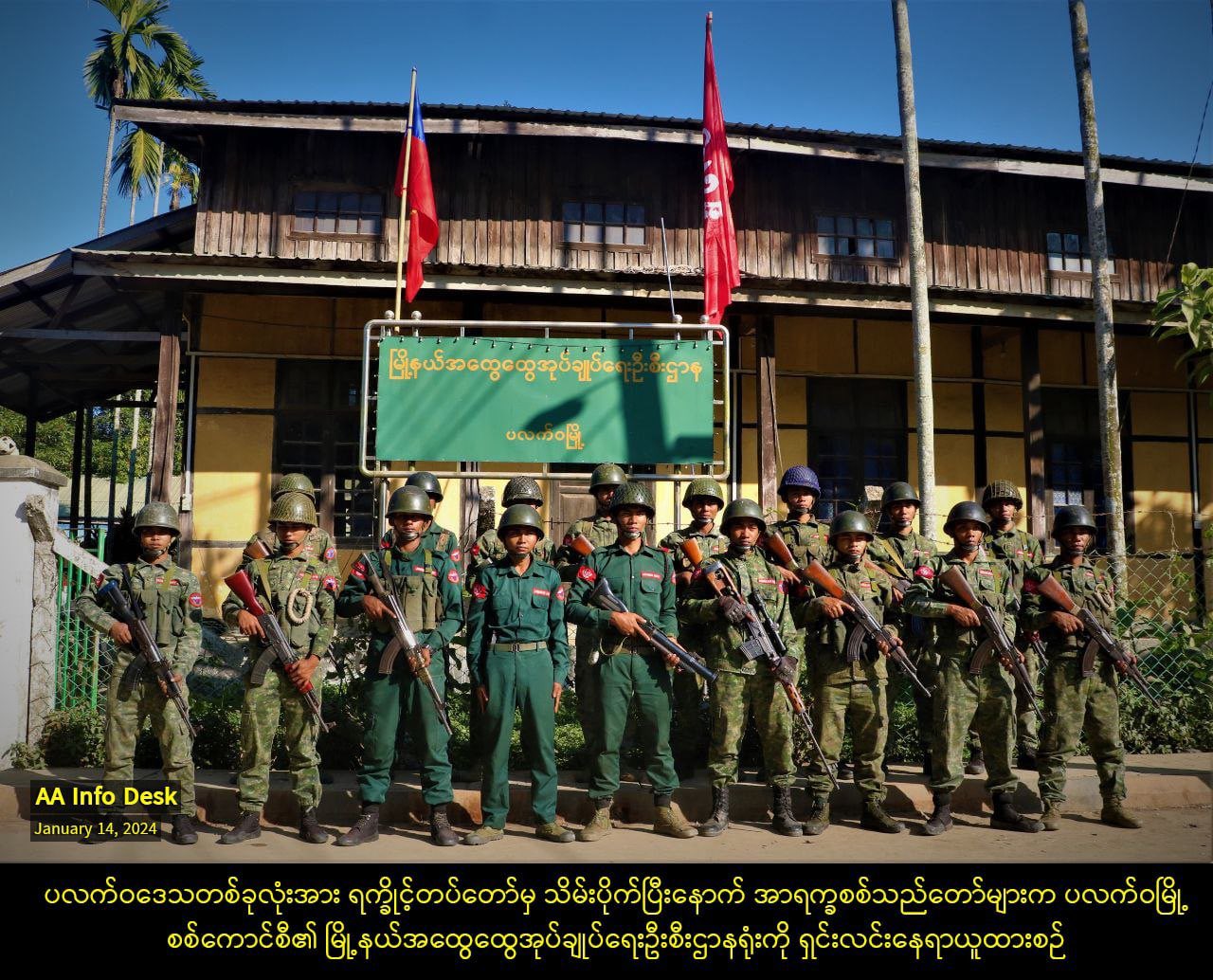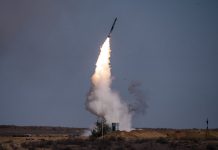Amid deepening strife in Myanmar between the ruling military administration and ethnic armed groups, the Chinese military has intensified its operations and patrols along the western border with Myanmar.
The People’s Liberation Army (PLA) announced on August 26 that it was kickstarting armed patrols along the border with Myanmar, which would also include air surveillance. The statement said that these patrols would focus on the towns of Ruili, Zhenkang, and other bordering regions.
Following the armed patrols in the region on August 27, the PLA Army and Air Force began combined live-fire drills on the Chinese side of the China-Myanmar border, the state-owned publication Global Times reported. Chinese analysts said the moves reflect China’s attempt to prevent a spillover of the ongoing conflict in Myanmar to China.
Senior Colonel Tian Junli, a spokesperson for the PLA Southern Theater Command, announced in a press release on August 27 that the command gathered its army and air force to start a joint live-action, conducting a live-fire exercise on the Chinese side of the China-Myanmar border.
The statement emphasized that the intra-service exercise aimed to test the capabilities of Chinese troops in conducting reconnaissance, early warning, multidimensional blockade, and control, as well as fire strikes. Tian concluded that the forces of the Southern Theatre Command were prepared to handle any contingency at any time, and the PLA troops would defend national sovereignty and uphold stability along the frontiers.
The #PLA is set to conduct live-fire drills on Chinese side of the China-Myanmar border from Tuesday to Thursday, which will demonstrate the PLA’s resolution and capability in safeguarding national sovereignty and border stability amid complex situation in northern Myanmar.… pic.twitter.com/FFqQqjKI6W
— Global Times (@globaltimesnews) August 26, 2024
Further, a notice released by the government of Yunnan Province in Southwest China said the exercise was scheduled to run till August 28 and cover the surrounding regions of Huyu and Wanding of Ruili city, Mengdui in Zhenkang township, and Mengding of Gengma Dai and Va Autonomous County. The drill was an extension of the military activity near the border.
An anonymous Chinese military expert informed the state media that the military exercises involved the Air Force, indicating a notable enhancement in scope compared to the previous armed patrols that were solely carried out by the Army.
The expert, who recently visited the China-Myanmar border, said that given the proximity of the cities and villages along the border, the ongoing conflict in the neighboring country could eventually spread across the border, given the complex circumstances in northern Myanmar.
The expert also noted that in addition to strengthening and testing the PLA’s capabilities, the exercise also served to prevent possible spillovers, including artillery shells exploding on the Chinese side. Both the armed patrols and drills are an attempt at establishing deterrence at a time when the security situation is at its worst and Myanmar has plunged into a deep crisis.
The concerns expressed by these analysts, who likely have close links with the PLA, are not unfounded, especially since China’s bordering regions have seen shelling in the recent past.
While the Chinese administration has refrained from publicly making any predictions regarding a potential spillover, it appears that it is ramping up its defenses, establishing deterrence, and rehearsing for a contingency that is never off the table.

China’s Myanmar Conundrum
A close inspection of the location of Chinese drills near Myanmar provides significant insights. Ruili, located in Yunnan province in southwest China, is a major route for people and goods entering and leaving Myanmar. However, amid escalating conflict in Shan State in Myanmar across the border, China has recorded artillery shells wounding locals and damaging properties there.
Since the Arakan Army, the Ta’ang National Liberation Army, and the Myanmar National Democratic Alliance Army—collectively referring to themselves as the Three Brotherhood Alliance—launched a concerted offensive on October 27, fighting has been ongoing in the northern section of Shan state.
Although China previously brokered peace between the two sides, the deal quickly fell apart. After the ceasefire mediated by Beijing collapsed, armed factions launched a renewed and more extensive attack, seizing control of several military installations in Myanmar as well as important cities. In response, the military launched drone strikes and bombings, blocked access to the internet, and disabled cell phone networks.
This situation has led to the most severe conflict the country has experienced in several years. The effects of this escalating turmoil are being sensed in China, even though the two nations maintain strong diplomatic ties.
In January this year, China reiterated its request for a ceasefire in northern Myanmar after errant artillery fire struck a town on the Chinese side of the border amid intensifying combat between the Myanmar military junta and rebel groups.
At the time, shells fired from northern Myanmar struck Nansan, a town in Yunnan province, on January 4. Nansan is located around 2.5 kilometers from the border. Some citizens narrated accounts of windows breaking and walls collapsing due to the explosions. At least five Chinese citizens were hurt in the event and are said to be currently receiving treatment in a hospital.
China has lodged solemn representations with the relevant parties over the incident in which artillery shells from Myanmar fell into Southwest China's Yunnan Province, causing injuries on Wednesday. China once again called on the parties involved in the conflict in northern… pic.twitter.com/eyjefw6428
— Global Times (@globaltimesnews) January 4, 2024
The Chinese Foreign Ministry said that Beijing “strongly deplored” the events and announced that It would take all necessary steps to safeguard its citizens’ lives and property. Beijing has been concerned because much of the fighting is taking place along Myanmar’s border with China, impeding cross-border trade.
The Myanmar Army is struggling to put down the rebels, particularly in the area near the Chinese border. Toward the end of last year, during combat operations in a jungle close to China’s northern border, an army captain expressed his dismay, stating that he had never encountered warfare of such intensity. “I have never faced these kinds of battles before,” the combat veteran told The Associated Press by phone.
China’s foreign minister Wang Yi stated earlier this month that his nation “opposes chaos and war in Myanmar.” If reports are to be believed, the Chinese administration is trying to engage with both sides to ease tensions.
Wang, who was visiting the country, informed Senior Gen. Min Aung Hlaing that China disagreed with the attacks in Shan State. The top envoy from China also conveyed hopes that Myanmar “will effectively safeguard the safety of Chinese personnel and projects” within its borders.
- Contact the author at sakshi.tiwari9555 (at) gmail.com
- Follow EurAsian Times on Google News




